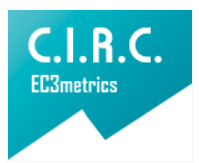Electroglottographic characteristics of normal cough in a group of young adults
Características electroglotográficas de la tos normal en un grupo de adultos jóvenes Electroglottographic characteristics of normal cough in a group of young adults
Main Article Content
Physiologically, cough develops in phases, which provide its characteristic with quantifiable factors for analysis in the clinical swallowing evaluation. For the phonoaudiological/logopedic approach, cough as a physiological protection resource is a functional indicator of swallowing, since it usually appears when swallowing physiology is altered, being defined in the evaluative framework as functional or weak. In order to objectify its analysis, this project proposes to quantify the characteristics of cough in a group of young adult subjects through electroglottography. The research proposes the recording of general data, the electroglottographic evaluation of cough and finally the data recording and analysis. Under multivariate analysis, Spearman's ordinal correlation indicated significant correlations, with a confidence level of 95% for the association of variables weight - height and weight - fundamental frequency, the latter for both the frequency of the first and the last cough. The mean age was defined as 24.7 years, with a standard deviation of plus or minus 7 years. The subjects assessed were mostly women. The research estimated a direct analysis of the electroglottographic characteristics, without linking related aspects that may alter the resulting data. It is necessary to be able to cross-reference the data with physiological analysis of air intake, muscle strength, oral motor control, etc.
Downloads
Publication Facts
Reviewer profiles N/A
Author statements
Indexed in
- Academic society
- Bogotá: Corporación Universitaria Iberoamericana
- Publisher
- Bogotá: Corporación Universitaria Iberoamericana
Article Details
Banus, M. S., Birchall, M. A., & Graveston, J. A. (2018). Developing control algorithms of a voluntary cough for an artificial bioengineered larynx using surface electromyography of chest muscles: A prospective cohort study. Clinical Otolaryngology, 43(2), 562–566. https://doi.org/10.1111/coa.13022 DOI: https://doi.org/10.1111/coa.13022
Calvache-Mora, C. A. (2020). Parámetros vocales para definir la severidad de una disfonía. Revista de Investigación e Innovación En Ciencias de La Salud, 2(2), 14–30. https://doi.org/10.46634/riics.39 DOI: https://doi.org/10.46634/riics.39
Calvache Mora, C. A. (2015). Objetividad de la electroglotografía. Aplicaciones clínicas e investigativas en la voz. Revista de Logopedia, Foniatría y Audiología, 35(3), 134–142. https://doi.org/10.1016/J.RLFA.2014.11.001 DOI: https://doi.org/10.1016/j.rlfa.2014.11.001
Chang, A. B. (2006). The physiology of cough. Paediatric Respiratory Reviews, 7(1), 2–8. https://doi.org/10.1016/J.PRRV.2005.11.009 DOI: https://doi.org/10.1016/j.prrv.2005.11.009
Davenport, P. W., Bolser, D. C., Vickroy, T., Berry, R. B., Martin, A. D., Hey, J. A., & Danzig, M. (2007). The effect of codeine on the Urge-to-Cough response to inhaled capsaicin. Pulmonary Pharmacology and Therapeutics, 20(4), 338–346. https://doi.org/10.1016/j.pupt.2006.10.012 DOI: https://doi.org/10.1016/j.pupt.2006.10.012
Giraldo-Cadavid, L. F., Gutiérrez-Achury, A. M., Ruales-Suárez, K., Rengifo-Varona, M. L., Barros, C., Posada, A., Romero, C., & Galvis, A. M. (2016). Validation of the Spanish Version of the Eating Assessment Tool-10 (EAT-10spa) in Colombia. A Blinded Prospective Cohort Study. Dysphagia, 31(3), 398–406. https://doi.org/10.1007/s00455-016-9690-1 DOI: https://doi.org/10.1007/s00455-016-9690-1
Leith, D. E. (1985). The Development of Cough. AM REV RESPIR DIS, 131(1), 39–42. https://doi.org/10.1164/arrd.1985.131.s5.s39
Marik, P. E., & Kaplan, D. (2003). Aspiration pneumonia and dysphagia in the elderly. Chest, 124(1), 328–336. https://doi.org/10.1378/chest.124.1.328 DOI: https://doi.org/10.1378/chest.124.1.328
Mazzone, S. B., McLennan, L., McGovern, A. E., Egan, G. F., & Farrell, M. J. (2007). Representation of capsaicin-evoked urge-to-cough in the human brain using functional magnetic resonance imaging.
American Journal of Respiratory and Critical Care Medicine, 176(4), 327–332. https://doi.org/10.1164/rccm.200612-1856OC DOI: https://doi.org/10.1164/rccm.200612-1856OC
Mills, C., Jones, R., & Huckabee, M. L. (2017). Measuring voluntary and reflexive cough strength in healthy individuals. Respiratory Medicine, 132, 95–101. https://doi.org/10.1016/j.rmed.2017.09.013 DOI: https://doi.org/10.1016/j.rmed.2017.09.013
Mlynczak, M., Pariaszewska, K., & Cybulski, G. (2015). Automatic cough episode detection using a vibroacoustic sensor. Annual International Conference of the IEEE Engineering in Medicine and Biology Society, EMBS, 2015-Novem, 2808–2811. https://doi.org/10.1109/EMBC.2015.7318975 DOI: https://doi.org/10.1109/EMBC.2015.7318975
Park, M. K., & Lee, S. J. (2018). Changes in Swallowing and Cough Functions Among Stroke Patients Before and After Tracheostomy Decannulation. Dysphagia, 33(6), 857–865. https://doi.org/10.1007/s00455-018-9920-9 DOI: https://doi.org/10.1007/s00455-018-9920-9
Robert, D., Giovanni, A., & Zanaret, M. (2000). Fisiología de la deglución. EMC - Otorrinolaringología, 29(1), 1–15. https://doi.org/10.1016/s1632-3475(00)71974-6 DOI: https://doi.org/10.1016/S1632-3475(00)71974-6
Rodríguez Arauz, G., & Ramírez Esparza, N. (2017). Prácticas parentales, alimentación saludable y medidas objetivas de composición corporal en la niñez preescolar. Actualidades En Psicología, 31(122), 61. https://doi.org/10.15517/ap.v31i122.26411 DOI: https://doi.org/10.15517/ap.v31i122.26411
Sakai, K., Hirano, H., Watanabe, Y., Tohara, H., Sato, E., Sato, K., & Katakura, A. (2016). An examination of factors related to aspiration and silent aspiration in older adults requiring long-term care in rural Japan. Journal of Oral Rehabilitation, 43(2), 103–110. https://doi.org/10.1111/joor.12349 DOI: https://doi.org/10.1111/joor.12349
Smith Hammond, C. A., Goldstein, L. B., Zajac, D. J., Gray, L., Davenport, P. W., & Bolser, D. C. (2001). Assessment of aspiration risk in stroke patients with quantification of voluntary cough. Neurology, 56(4), 502–506. https://doi.org/10.1212/wnl.56.4.502 DOI: https://doi.org/10.1212/WNL.56.4.502
Sunger, K., Powley, W., Kelsall, A., Sumner, H., Murdoch, R., & Smith, J. A. (2013). Objective measurement of cough in otherwise healthy volunteers with acute cough. European Respiratory Journal, 41(2), 277–284. https://doi.org/10.1183/09031936.00190111 DOI: https://doi.org/10.1183/09031936.00190111
Torres-Castro, R., Monge, G., Vera, R., Puppo, H., Céspedes, J., & Vilaró, J. (2014). Estrategias terapéuticas para aumentar la eficacia de la tos en pacientes con enfermedades neuromusculares. Revista Medica de Chile, 142(2), 238–245. https://doi.org/10.4067/S0034-98872014000200014 DOI: https://doi.org/10.4067/S0034-98872014000200013
Vilardell, N., Rofes, L., Nascimento, W. V., Muriana, D., Palomeras, E., & Clavé, P. (2017). Cough reflex attenuation and swallowing dysfunction in sub-acute post-stroke patients: prevalence, risk factors, and clinical outcome. Neurogastroenterology and Motility, 29(1), 1–10. https://doi.org/10.1111/nmo.12910 DOI: https://doi.org/10.1111/nmo.12910
Vlot, C., Ogawa, M., Hosokawa, K., Iwahashi, T., Kato, C., & Inohara, H. (2017). Investigation of the Immediate Effects of Humming on Vocal Fold Vibration Irregularity Using Electroglottography and High-speed Laryngoscopy in Patients With Organic Voice Disorders. Journal of Voice, 31(1), 48–56. https://doi.org/10.1016/j.jvoice.2016.03.010 DOI: https://doi.org/10.1016/j.jvoice.2016.03.010
Wu, M. C., Chang, Y. C., Wang, T. G., & Lin, L. C. (2004). Evaluating Swallowing Dysfunction Using a 100-ml Water Swallowing Test. Dysphagia, 19(1), 43–47. https://doi.org/10.1007/s00455-003-0030-x DOI: https://doi.org/10.1007/s00455-003-0030-x

















